1. Aféierung
Brass vs Bronze, zwee prominent Kupfer-baséiert Legierungen, hunn Zivilisatioun fir Joerdausend zerwéiert.
Wärend hire waarme metallesche Glanz an ähnlech Nomenklatur dacks duercherneen bréngen, dës Legierungen hunn ënnerschiddlech chemesch Kompositioune, Eegeschafte, an Uwendungen.
Vun hire Rollen an antike Waff a Mënzprägung bis modern Gebrauch an elektresche Systemer a Marine Ëmfeld,
d'Entscheedung tëscht Messing a Bronze scharnéiert op ville Critèren: mechanesch Leeschtung, Chatikprobiste, Ästhetesch Präferenz, a Käschteneffizienz.
Hir Nuancen ze verstoen ass essentiell fir dat richtegt Material fir déi richteg Funktioun ze wielen.
2. Wat ass Brass?
Bram Emmach as A Kupfer-Zinklegierung bekannt fir seng excellent Aarbechtbarkeet, attraktiv gëllen Erscheinung, a moderéiert mechanesch Kraaft.
Ofhängeg vum Zinkgehalt an der Präsenz vun zousätzlech Legierungselementer, Messing kann eng breet Palette vu kierperlechen ausweisen, Mangitär, a chemesch Eegeschaften.

Et ass eng vun de villsäitegsten Ingenieurslegierungen a gëtt extensiv benotzt an elektresch Komponenten, dekorativen Elementer, Sanitär Ariichtungen, musikalesch Instrumenter, a Präzisioun machined Deeler.
D'definéierend Charakteristik vu Messing ass seng tunable Zesummesetzung: duerch Upassung vun der Kupfer-Zink-Verhältnis a kleng Elementer aféieren wéi z Loaz Steed, tinn, Aluminium, Manganese, Silicon, oder Eisen,
Ingenieuren kënnen d'Leeschtung vun der Legierung personaliséieren fir spezifesch Uwendungen ze passen.
Chunchhouf Cläng & Alloy Systemer
Brasses sinn typesch klasséiert baséiert op hir Phase Struktur an an Zink Inhalt:
- Alpha Brass (α-Brass)
-
- Zink Inhalt: Bis zu ~37%
- Struktur: Eenphas zolidd Léisung
- Eegeschafte: Excellent kal Aarbechtsbarkeet, héich Duktilitéit, gutt corrosion Resistenz
- Uwendungen: Déif Zeechnen, dréinen, kal Formen
- Alpha-Beta Messing (Duplex Brass)
-
- Zink Inhalt: 37-45%
- Struktur: Zwee-Phase (a + b)
- Eegeschafte: Méi staark a méi haart, awer manner duktil; gëeegent fir waarm schaffen
- Uwendungen: Schmieden, Ventil Kierper, schwéier-Pflicht Armature
- Lead Brass (Free-Cutting Messing)
-
- Lead Inhalt: ~1-3%
- Eegeschafte: Superior machinability wéinst der Präsenz vun fein dispergéiert Bläi Deelchen
- Uwendungen: Präzisioun machinéiert Komponenten, Sanitär Hardware, Befestigungen
- Special Brass Alliagen
-
- Legierungselementer wéi z Aluminium (AlS) fir Kraaft a Korrosiounsbeständegkeet, Silicon (An an) fir eng verbessert Verschleißbeständegkeet, an an tinn (Stonn) fir verstäerkte Entzinkungsresistenz
- Uwendungen: Marine Hardware, elektresch Statiounen, dekorativ Uwendungen
Gemeinsam Graden a Standards
| 40 Milliounen | Ufank | Typesch Kompositioun | Charakteristiken an Uwendungen |
| C26000 | ASTM B135 | CU- 70%, Zn 30% | <p; excellent kal workability; benotzt an Heizkierper Kären, Munitioun casings, an dekorativen Trimm |
| C36000 | ASTM B16 | CU- 61.5%, Zn 35.5%, Pb ~3% | Free-cutting Messing mat aussergewéinlech machinability; ideal fir automatesch Schrauwen Maschinnen |
| H62 | Gb / t 5231 (China) | CU- 62%, Zn 38% | Allgemeng Messing mat gudder waarmer Veraarbechtung; an fasteners benotzt, Ventil Deeler, an Nieten |
| H59 | Gb / t 5231 (China) | CU- 59%, Zn 41% | Méi staark awer manner duktil; benotzt an mechanesch strukturell Komponente |
| CZ108 | BS EN 12163 | Ähnlech wéi C27200 | Alpha Brass; gutt Kältebildung a Schweißeigenschaften; benotzt an der architektonescher Hardware an allgemenger Ingenieur |
3. Wat ass Bronze?
Bronze ass eng breet Famill vun Kupfer-baséiert Legierungen haaptsächlech mat Zinn legeréiert,
obwuel aner Elementer wéi Aluminium, Silicon, Phosphor, a Mangan sinn och allgemeng Legierungsmëttelen a modernen Bronzesystemer.
Wärend historesch de Begrëff "Bronze" strikt op Kupfer-Zinnlegierungen bezeechent, et ëmfaasst elo eng breet Palette vun Legierungen mat diversen Eegeschafte geschnidde fir spezifesch industriell Besoinen.
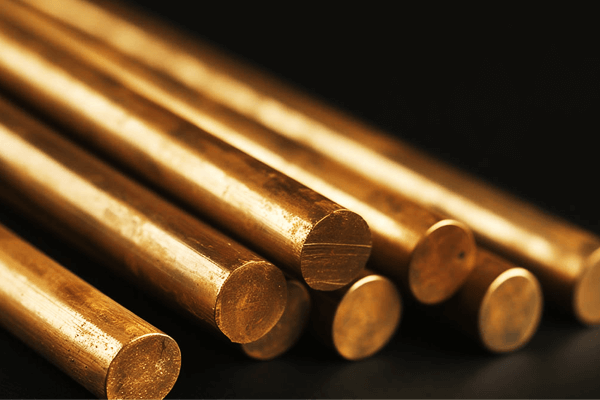
Bronze ass bekannt fir seng héich Stäerkt, héich Korrosiounsbeständegkeet, excellent zouzedrécken Leeschtung, a Fäegkeet fir eng stabil Schutzpatina ze bilden, besonnesch an harsh Ëmfeld.
Et gouf fir Dausende vu Joer benotzt - daten zréck an d'Bronzezäit - a gëtt weider wäit benotzt an Marine, strukturell, elektresch, artistesch, a Lagerapplikatiounen.
De Schlësselunterscheed tëscht Messing a Bronze läit an hiren Legierungselementer: Messing ass virun allem Kupfer + zinc, iwwerdeems Bronze allgemeng ass Kupfer + tinn (oder aner Elementer wéi Al, An an, P, MN-).
Bronze weist typesch méi héich Kraaft, Hannscht, a Resistenz géint Korrosioun a Metallmüdegkeet, och wann zu méi héije Käschte a méi niddereg Veraarbechtbarkeet am Verglach zum Messing.
Chunchhouf Cläng & Alloy Systemer
Bronzelegierungen ginn no hirem primäre Legierungselement iwwer Kupfer klasséiert:
- Phosphor Bronze (Cu-Sn-P)
-
- Zinn Inhalt: ~0,5-11%, mat Spuer Phosphor
- Charakteristiken: Héich Middegkeet Resistenz, wéineg Reibsung, excellent Fréijoer Eegeschafte
- Uwendungen: Beafingen, Quellen, elektresch Stecker, Gears
- Aluminium Bronze (Cu-Al)
-
- Aluminiumgehalt: ~5-12%
- Charakteristiken: Aussergewéinlech corrosion Resistenz (besonnesch am Salzwaasser), héich Stäerkt
- Uwendungen: Marine Hardware, d'Ventil, Pumpzen, Loftfaart Bushings
- Silicon Bronze (Cu-Si)
-
- Silicon Inhalt: ~2-6%
- Charakteristiken: Gutt Castability, Korrosioun Resistenz, a moderéiert Kraaft
- Uwendungen: Architektonesch Hardware, Skulpturen, Befestigungen
- Mangan Bronze (Cu-Zn-Mn-Fe)
-
- Technesch eng Messing Variant, awer dacks mat Bronze gruppéiert wéinst ähnlechen Kraafteigenschaften
- Charakteristiken: Héich tensilil Stäerkt, gutt zouzedrécken Resistenz
- Uwendungen: Heavy-Pflicht Lager, propeller shafts, Ventilstämm
Gemeinsam Graden a Standards
| 40 Milliounen | Ufank | Typesch Kompositioun | Charakteristiken an Uwendungen |
| C51000 | ASTM B139 | CU- 95%, Stonn 5%, P Spuer | Phosphor Bronze; héich Middegkeet Resistenz a Fréijoer Eegeschafte; an Bëscher benotzt, Gears, elektresch Kontakter |
| C54400 | ASTM B139 | CU- 95%, Stonn 4%, PB 1% | Bläi Phosphor Bronze; verbessert machinability fir Präzisioun Komponente |
| C63000 | ASTM B150 | CU- 83%, AlS 10%, An 5%, Fe 2% | Néckel Aluminium Bronze; héich Korrosiounsbeständegkeet a Kraaft; ideal fir Marine Propeller, Pumpzen |
| C64200 | ASTM B150 | CU- 93.5%, AlS 6%, An an 0.5% | Silicon Aluminium Bronze; gutt Kraaft an corrosion Resistenz; a Ventilstämm a Befestigungen benotzt |
| C86300 | ASTM B271 | CU- 70%, MN- 2.5%, Fe 3%, Zn 24% | Mangan Bronze; héichstäerkt Lagerlegierung; benotzt fir tragend mechanesch Deeler |
4. Mechanesch Leeschtung vu Brass vs Bronze
Wann Dir tëscht Bronze vs Messing fir Ingenieursapplikatioune wielt, mechanesch Leeschtung ass e kriteschen Critère.
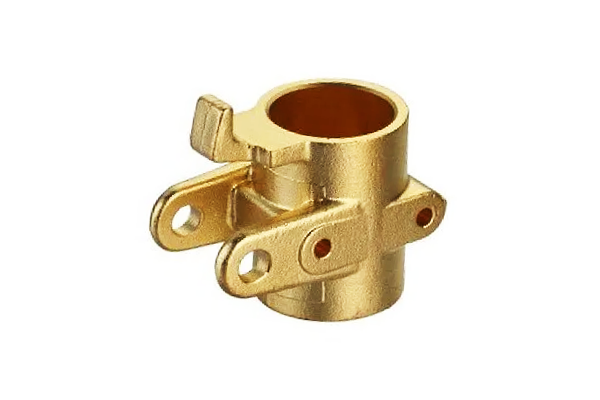
Wärend béid Kupfer-baséiert Legierungen sinn, hir mechanesch Eegeschafte variéieren wesentlech baséiert op Zesummesetzung, Veraarbechtung, an Phase Struktur.
Mechanesch Kraaft an Duktilitéit Verglach
| Legierung Typ | Tensil Stäerkt (MPa MPa) | Rendung Kraaft (MPa MPa) | Erlong (%) | Zougankheet (Qualitativ) |
| C26000 (Cartouche Messing) | 300-500 | 100-250 | 30-50 | Mëttelméisseg |
| C36000 (Free-Cutting Messing) | 400-550 | 250-400 | 20-35 | Moderéiert bis niddereg (wéinst Lead Inhalt) |
| C51000 (Phosphor Bronze) | 350-550 | 200-400 | 15-30 | Héichheet (excellent ënner cyclic Laascht) |
| C54400 (Bläi Phosphor Bronze) | 400-600 | 250-450 | 12-25 | Héichheet |
| C63000 (Aluminium Bronze) | 550-800 | 300-600 | 10-20 | Vill héich (Impakt a Middegkeet resistent) |
| C86300 (Mangan Bronze) | 600-850 | 400-600 | 10-20 | Héichheet |
Hannscht (Briinsell, Vickers, Rockwell)
| Legierung Typ | Briinsell (HB) | Vickers (HV) | Rockwell (B/H) |
| C26000 Messing | ~65-110 | ~80-120 | ~RB 60-80 |
| C36000 Free-Cutting | ~110-150 | ~120-160 | ~RB 80-95 |
| C51000 Phos Bronze | ~80-130 | ~100-160 | ~RB 70-85 |
| C63000 Al Bronze | ~150-200 | ~180-230 | ~RC 25–35 |
| C86300 Mn Bronze | ~170-230 | ~200-270 | ~RC 25–35 |
Middegkeet Liewen am zyklesche Lueden
| Legierung Typ | Ausdauer Limit (MPa MPa) | Weise gutt |
| Alpha Brass (C26000) | ~ 100-150 | Sensibilitéit fir Uewerfläch Mängel a Stress Risers |
| Al Bronze (C63000) | ~250-350 | Superior Middegkeet Resistenz |
| Phosphor Bronze | ~150-250 | Excellent fir zyklesch Fréijoer Uwendungen |
5. Brass vs Bronze: Kierperlecht & Thermal Properties Verglach Table
| Prowalange | Bram Emmach (Typesch Gamme) | Bronze (Typesch Gamme) | Bemierkungen |
| Dicht | 8.3 - 8.7 g / cm³ | 7.5 - 8.9 g / cm³ | Bronze variéiert méi duerch Legierungselementer (e.g. tinn, Aluminium, Manganese) |
| Spezifesch Kraaft | 45 - 65 kN·m/kg | 55 - 85 kN·m/kg | Bronze allgemeng méi staark pro Eenheet Gewiicht |
| Thermesch Verwaltungsgeschäfter | 95 - 130 W / m · k | 35 - 70 W / m · k | Messing féiert Hëtzt besser; ideal fir thermesch Transfermaart Deeler |
| Thermesch Diffusivitéit | ~3.5 - 4.0 mm²/s | ~1.8 - 2.8 mm²/s | Messing verbreet Hëtzt méi séier; Bronze dampens Hëtzt Ännerungen |
| Koeffizient vun thermesche Expansioun (Cett) | ~20 - 21 × 10⁻⁶ / k | ~16 - 18 × 10⁻⁶ / k | Bronze bitt besser Dimensiounsstabilitéit bei Temperaturschwankungen |
| Spezifesch Hëtztkapazitéit | ~0,38 J/g·K | ~0,35 J/g·K | Messing liicht besser fir Hëtztlagerung |
| thermesch Schock Resistenz | Mëttelméisseg | Héichheet | Bronze widderstoen Rëss ënner rapid Temperatur änneren |
| Dimensional Stabilitéit | Moderéiert bis niddereg | Héichheet | Bronze bevorzugt a Präzisioun thermesch Vëlo-Ëmfeld |
6. Akustesch & Ästhetesch Qualitéite vu Messing vs Bronze
Resonanz an Dämpfung a musikaleschen Instrumenter (Klacken, cymbals, Saiten)
- Brass Instrumenter: Messing ass dat primär Material fir musikalesch Instrumenter wéi Trompetten, Trombonnen, an Hunnen.
Seng relativ héich akustesch Impedanz a gutt Resonanzeigenschaften erlaben et hell ze produzéieren, mächteg Kläng.
D'Fäegkeet vun der Legierung fir fräi op spezifesch Frequenzen ze vibréieren gëtt Messinginstrumenter hir charakteristesch räich Téin. - Bronze an Percussion Instrumenter: Bronze gëtt vill an Perkussiounsinstrumenter wéi Klacken benotzt, cymbals, an gong.
Zinn-Bronze, besonnesch, si bekannt fir hir exzellent akustesch Eegeschaften.
Si hunn eng eenzegaarteg Kombinatioun vu Resonanz an Dämpfung, wat zu engem waarme Resultat, räiche Sound mat engem laange Sustain.
Zum Beispill, Kierch Klacken aus Bronze produzéiere déif, sonoresch Téin déi iwwer laang Distanzen droen kënnen.
Faarf Spektrum: giel Messing vs roude Bronze vs Vergulde Finishen
- Faarf vu Messing: D'Faarf vu Messing variéiert jee no hirem Zinkgehalt. Niddereg Zink Brass hunn e roude-giel Téin, iwwerdeems méi héich-Zink Brass sinn méi gëllen-giel.
Dës hell, attraktiv Faarf mécht Messing eng populär Wiel fir dekorativ Uwendungen, wéi Hardware, Bijouen, an architektonesch Akzenter. - Faarf vun Bronze: Bronze huet typesch eng rout-brong Faarf, déi jee no der Legierungskompositioun liicht variéiere kënnen.
Am Zäitoflaf, Bronze kann eng Patina entwéckelen, déi vu gréng-blo variéiere kënnen (an Outdoor Ëmfeld) bis däischter brong, bäidréit zu sengem ästheteschen Appel, besonnesch a Konscht an architektonesch Skulpturen. - Gilt Finishen: Béid Messing a Bronze kënne vergëllte Finishen ginn fir hir Erscheinung ze verbesseren.
Vergilte Finishen kënne variéiere vun helle Gold-ähnleche Beschichtungen bis méi antik ausgesinn Patinas, erlaabt eng breet Palette vun ästheteschen Optiounen an dekorative Produkter.
Dekorative Techniken: Ätzen, patination, Zupping
- Ätzen: Béid Messing a Bronze kënne geätzt ginn fir komplizéiert Designen ze kreéieren. Ätzen beinhalt d'Benotzung vu Chemikalien fir selektiv Material vun der Uewerfläch ze läschen, de gewënschte Muster opzeweisen.
Dës Technik gëtt allgemeng an der Produktioun vun dekorativen Plaques benotzt, Mënzen, a Konschtobjekter. - Patinatioun: Wéi virdrun ernimmt, Bronze entwéckelt natierlech eng Patina mat der Zäit. Wéi och ëmmer, Patinatioun kann och kënschtlech induzéiert ginn fir spezifesch ästhetesch Effekter z'erreechen.
A Messingen, Patinatiounstechnike kënne benotzt ginn fir al oder antik ausgesinn Finishen ze kreéieren. - Zupping: Plating ass eng aner populär dekorativ Technik. Messing kann mat Gold plated ginn, Sëlwer, oder Néckel fir seng Erscheinung ze verbesseren an et vu Korrosioun ze schützen.
Bronze kann och plated ginn, obwuel et manner heefeg ass wéinst sengem natierlechen ästheteschen Appel an dem Potenzial fir d'Platéierung fir d'Entwécklung vu senger charakteristescher Patina ze stéieren..
7. Elektell & Magnéitesch Eegeschafte vu Bronze vs Messing
Messing vs Bronze weisen ënnerschiddlech elektresch a magnetesch Verhalen déi hir Eegenheet an elektresch beaflossen, elektronesch, an elektromagnetesch Interferenz (EMI) Uwendungen.
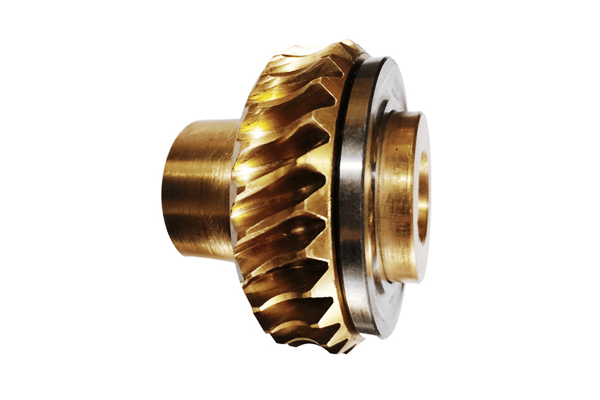
Elektresch Kämpfung
| Material | Elektresch Kämpfung (% IACS)* | Typesch Uwendungen |
| Bram Emmach (C26000) | 15 - 28% | Elektresch Stecker, Terminals, schalt |
| Phosphor Bronze (C51000) | 5 - 8% | Quellen, Stuerk, niddereg-Stroum Kontakter |
| Aluminium Bronze (C63000) | 7 - 10% | Korrosiounsbeständeg Stecker, Spezialitéit Kontakter |
IACS = International Annealed Copper Standard (100% = Konduktivitéit vu purem Kupfer)
- Messing Legierungen allgemeng Offer moderéiert elektresch Konduktivitéit, genuch fir vill elektresch Komponenten wou d'Konduktivitéit a mechanesch Kraaft ausgeglach sinn.
- Bronzelegierungen hunn manner elektresch Konduktivitéit, haaptsächlech wéinst hiren Legierungselementer (tinn, Phosphor, Aluminium),
mécht se manner gëeegent wou héich elektresch Leitung erfuerderlech ass awer wäertvoll wou mechanesch Kraaft a Korrosiounsbeständegkeet prioritär sinn.
Magnéitesch Eegeschaften
| Material | Magnéitesch Permeabilitéit (µr) | Magnéitescht Verhalen |
| Bram Emmach | ~1.0 (net magnetesch) | Wesentlech net magnetesch |
| Phosphor Bronze | ~1.0 (net magnetesch) | Net-Magnéitesch |
| Mangan Bronze | E bësse magnetesch | Kann schwaache Magnetismus weisen |
- Souwuel Messing an déi meescht Bronzelegierungen sinn net magnetesch, wat avantagéis ass an Uwendungen déi minimal magnetesch Interferenz erfuerderen.
- E puer spezialiséiert Bronze wéi Mangan Bronze ka liicht magnetesch Eegeschaften ausweisen, awer meeschtens net-ferromagnetesch bleiwen.
EMI / RFI Shielding Considératiounen
- Wéinst moderéierter Konduktivitéit an net-magnetescher Natur, Bram Emmach gëtt dacks benotzt an EMI / RFI shielding Komponente wéi Stecker an Uschlëss, Equilibréiert Konduktivitéit mat mechanesch Robustheet.
- Bronze manner Konduktivitéit reduzéiert seng Effektivitéit beim Schirm am Verglach zum Messing,
awer seng héich Korrosiounsbeständegkeet mécht et gëeegent fir haart Ëmfeld wou EMI Schirmung sekundär ass. - Plating mat héichleitend Metaller (Z.B., Sëlwer oder Koffer) op entweder Messing oder Bronze kann Uewerflächekonduktivitéit verbesseren fir besser EMI / RFI Leeschtung.
8. Korrosioun Resistenz & Surface Verhalen
- Dezincification: Messing kann aus Zink Leaching an ätzend oder héich-chlorid Ëmfeld leiden, d'Material schwächen.
- Zinn Leaching: Bronze widderstoen allgemeng Korrosioun besser an erlieft keng Entzinkéierung, obwuel Zinn kann a ganz sauer Medien ausléisen.
- Stress korrosion Cracking: Messing ass méi ufälleg, besonnesch an ammoniakräich Ëmfeld.
- Marine Leeschtung: Aluminium a Silizium Bronze sinn aussergewéinlech korrosionsbeständeg, wäit benotzt an Marine an Offshore Strukturen.
- Patina: Bronze formt a Stroll, Schutzmoossnamen Patina, iwwerdeems Messing tarnishes a vläicht poléieren oder Sigel verlaangen.
9. Streag. Fënner & Bildung vu Brass vs Bronze
Casting Verhalen: Flëssegkeet, Kréien, an Porositéit
Zosbau bleift eng primär Fabrikatioun Wee fir vill Messing a Bronze Komponente. Hir Gosseigenschaften ze verstoen hëlleft den Design ze optimiséieren an Mängel ze minimiséieren.

- Messing weist super Flëssegkeet, mat Wäerter déi ongeféier 40-45 cm op der Flëssegkeetstestskala erreechen, erlaabt komplizéiert Geometrie wéi detailléiert architektonesch Armaturen a Präzisiounsventile.
Seng Schrumpfquote fällt typesch tëscht 1.5% an an 2.0%, déi hëlleft Dimensioun Genauegkeet erhalen. - Am Kontrast, Bronzelegierungen weisen moderéiert Flëssegkeet, Gamme vu ronn 30-38 cm, déi d'Goss vu ganz dënnwandegen oder komplexe Formen erausfuerdert.
D'Schrumpfung kann opgoen 2.0% zu 2.5%, erfuerderlech Erlaabnes am Schimmeldesign fir Gossdefekte ze vermeiden.
Porositéit ass méi heefeg a Bronzegoss, virun allem ouni optimiséiert kille Regimer, beaflosst mechanesch Integritéit.
Kal schaffen: Duktilitéit a Formungsgrenzen
Kale Aarbecht formt Metaller ënner hirer Rekristalliséierungstemperatur, d'Kraaft verbesseren duerch d'Belaaschtungshärtung awer erfuerdert genuch Duktilitéit.
- Messing blénkt a kale Veraarbechtung wéinst sengem Zinkgehalt a Mikrostruktur, oft erreechen elongation Wäerter tëscht 30-50% bei Spannungstesten nom Glühung.
Dëst erlaabt extensiv Operatiounen wéi déif Zeechnen, béien mat klenge Radien (bis zu 3-5 mm an Blieder), a fein Drot Zeechnen. - D'Duktilitéit vun der Bronze variéiert duerch Legierungselementer; zum Beispill, Phosphor Bronze weist Verlängerung tëscht 15-35%, wärend Aluminium Bronze op 10-20% fällt.
Kale Form vun dësen Legierungen erfuerdert méi grouss Béi Radie (typesch >10 mm) an Tëschenzäit annealing Rëss ze vermeiden.
Hot schaffen & Annealing: Temperatur an Äntwert
Hot schaffen verfeinert d'Mikrostruktur an erlaabt d'Verformung iwwer d'Kälteformungsgrenzen.
- Brass anneals effizient tëscht 450°C an 600°C, mat Rekristalliséierung bannent Minutten ofgeschloss.
Hot Walzen oder Schmieden produzéiert eenheetlech Kärgréisst, d'Zähegkeet an Duktilitéit verbesseren. - Bronze erfuerdert méi héich Temperaturen - dacks 600°C bis 900 °C - a méi annealing mol, heiansdo puer Stonnen, Duktilitéit ze recuperéieren.
Aluminium Bronze, zum Beispill, verlaangt virsiichteg Kontroll fir e Koarnung vu Kären ze vermeiden, déi mechanesch Eegeschaften degradéiere kënnen.
Machinability an Tooling: Effizienz an Erausfuerderungen
Machinability beaflosst Zyklus mol, Toolingkäschten, an Uewerfläch Finish Qualitéit.
- Messing machinability Bewäertung rangéiert vun 70% zu 100% relativ zu fräi-machining Messing Standarden.
Et produzéiert kontinuéierlech, liicht geréiert Chips a verlaangt moderéiert Schneidkräften.
Carbide Tools handhaben effektiv Messing, erlaabt High-Speed-Bearbeitung mat minimalem Toolverschleiung. - D'Maschinnbarkeet vun der Bronzelegierungen ass méi variabel an allgemeng manner, mat Bewäertungen tëscht 40% an an 70%.
Aluminium Bronze a Mangan Bronze si besonnesch abrasiv, d'Erhéijung vum Toolverschleißraten.
D'Maschinn vun Bronze erfuerdert dacks Kobalt-baséiert oder Keramik Tooling a reduzéiert Schneidgeschwindegkeet fir d'Liewensdauer vum Tool z'erhalen.
10. Matmaachen & Assemblée vu Brass vs Bronze
D'Verbindung vu Messing a Bronze Komponenten ass e kriteschen Deel vun hirer Uwendung am Sanitär, elektresch Systemer, strukturell Versammlungen, an artistesch Wierker.
Soldering vu Messing vs Brazing vu Bronze
Messing Soldering:
Messing ass héich gëeegent fir mëll an hart Löt wéinst senger favorabeler thermescher Konduktivitéit a Kompatibilitéit mat allgemenge Fëllmaterialien.
- Soft soldering (< 450° C) ass ideal fir liicht Aufgaben wéi Bijouen, kleng elektronesch Statiounen, an dekorativ Komponenten.
- Bläi-baséiert solders (Z.B., Sn-Pb 60/40) suergt gutt Befeuchtung a moderéiert Kraaft; Wéi och ëmmer,
Bläi-gratis solders (Z.B., Sn-Ag oder Sn-Cu) sinn elo wäit ugeholl fir RoHS-konform Produkter. - Hard soldering (sëlwer soldering) benotzt héich-Schmelze solders (450-800°C),
wéi Ag-Cu-Zn Legierungen, fir staark Gelenker a Messinginstrumenter ze kreéieren, schwéier Pflicht Sanitär Ariichtungen, a mechanesch Verbindungen.
Bronze Brazing:
Brazing ass déi bevorzugt Verbindungsmethod fir Bronze wéinst sengem méi héije Schmelzpunkt a Kraaftfuerderunge.
- Typesch Löttemperaturen reichen vun 750°C bis 950°C, ofhängeg vun der Legierungskompositioun.
- Zinn-Bronze a Phosphor Bronze ginn dacks mat Cu-P oder Cu-Sn Füllmetaller gelount, gewielt fir enk Basismetalleigenschaften ze passen an galvanesch Effekter ze reduzéieren.
- Aluminium a Mangan Bronze erfuerdert Spezialfäegkeeten mat passenden Aluminiumgehalt fir Phase-Mëssmatch an intermetallesch Bildung ze vermeiden.
- Fluxen oder inert Atmosphäre sinn dacks noutwendeg fir Oxidatioun wärend der Héichtemperaturverbindung ze vermeiden.
Mechanesch Verbindung (Threads, Press passt)
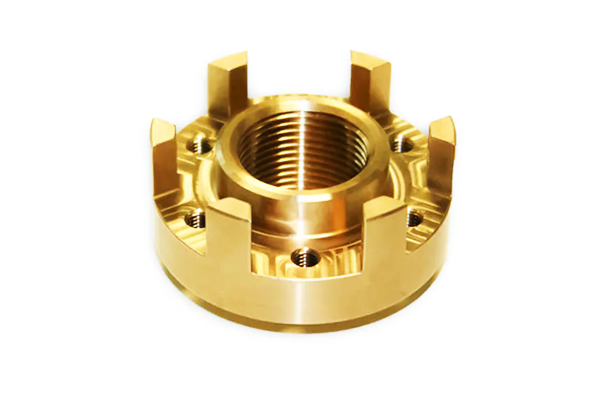
Messing mechanesch Veräin:
- Brass excellent machinability mécht et ideal fir threaded Verbindungen, virun allem a Flëssegket Ëmgank Systemer wéi Päif Kupplungen, d'Ventil, an Sensorgehäuse.
- Press passt ginn allgemeng a Low-to-moderate Laascht Uwendungen benotzt.
D'Duktilitéit vum Messing erlaabt eng kleng elastesch Deformatioun wärend der Insertioun, suergt fir eng schmuel a vibrationsbeständeg Gelenk.
Bronze mechanesch Verbindung:
- Duerch seng méi héich hardness a Kraaft, Bronze Komponente benotzt an schwéier-Pflicht Uwendungen (Z.B., Lagerhändler, Marine Ventile) vertrauen dacks op robust Fuedemformen a méi enk Press-Fit Toleranzen.
- Méi haart Bronzelegierungen wéi Mangan Bronze oder beryllium bronze verlaangen präzis machining an heiansdo Virheizung vu Wunnengen fir méi einfach Interferenz passt z'erméiglechen ouni Rëss ze induzéieren.
Verglach:
- Thread Schneidgeschwindegkeet: Messing - héich (300-400 SFM); Bronze - mëttelméisseg (150-250 SFM)
- Press Fit Toleranz Range (fir ⌀25 mm Schaft): Messing ~25-50 µm; Bronze ~15-35 µm
Klebstoffkompatibilitéit
Messing Klebstoff Bonding:
- Brass Obligatiounen gutt mat epoxien, Cyanoacrylaten, an an anaerobe Klebstoff, besonnesch an niddereg-Stress Versammlungen.
- Fir bescht Resultater:
-
- Botzen mat Isopropyl Alkohol oder Aceton
- Schreift d'Uewerfläch liicht fir d'Kontaktfläch ze vergréisseren
- Klebstoff opdroen a fir 5-30 Minutten ofhängeg vun der Formuléierung klemmen
Uwendungen enthalen dekorative mounts, wielt gauges, an dekorative Strukturen.
Bronze Adhesive Bonding:
- Bronze verlaangt méi streng Uewerfläch preparéieren duerch séier Oxidbildung.
-
- Recommandéiert: chemesch Ätzen (Z.B., Phosphorsäure) oder Grit Sprengung gefollegt vun direkter Bindung.
- Héichstäerkt Epoxy Klebstoff mat Verlängerung >5% bevorzugt sinn, besonnesch fir strukturell oder Schwéngung-ufälleg Gelenker.
Gëeegent fir Tool Inserts, strukturell Reparatur, a Konscht Installatiounen, besonnesch wou Schweißen net machbar ass.
11. Schlëssel industriell Uwendungen vu Brass vs Bronze
Messing a Bronze hunn hir Plaz an der moderner Industrie duerch Joerhonnerte vun zouverléissege Leeschtung verdéngt.
Hir ënnerschiddlech Kombinatioune vu mechanescher Kraaft, Korrosioun Resistenz, an Aarbechtbarkeet maachen se onverzichtbar an enger breeder Palette vu Secteuren.
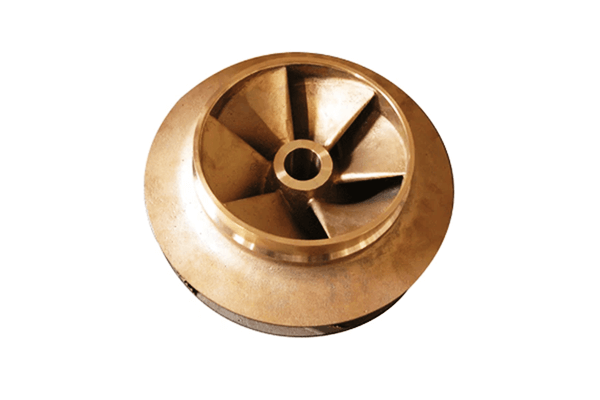
Industriell Uwendungen vu Brass
Sanitär a Flëssegkeetshandlungssystemer
Messing seng exzellent Veraarbechtung, Korrosiounsbeständegkeet am Drénkwaasser, a Versiegelungsfäegkeet maachen et zum Metal vun der Wiel fir Komponenten wéi:
- Päifmatten
- D'Ventil
- Kratten
- Kompressioun Ärmelen
- Sprinkler Düsen
Elektresch an Elektronik Industrie
Brass gutt elektresch Konduktivitéit an net-magnetesch Eegeschafte sinn ideal fir elektresch Hardware, sou wéi:
- Klemmblocken a Sockets
- Stecker a schalt Kontakter
- Kabelschneider a Buedemklemmen
- Gedréckt Circuit Verwaltungsrot (PCB) standoffs
Präzisioun Instrumenter a Aueren
Seng Dimensiounsstabilitéit an niddreg Reibungseigenschaften ënnerstëtzen hir Notzung an:
- Gears an Auer Rieder
- Kalibrierung Knäppercher
- Wielt a Bezel
Dekorativ Architektur an Hardware
Brass gëllen Ästhetik a Resistenz géint Tarnishing erlaabt eng laangfristeg Notzung an:
- Do Handelen a Schleisen
- Gelänner an architektonescht Trimm
- Musikalesch Instrumenter (Trompetten, Hunnen)
- Luuchten an Ziergrillen
Automotive an Aerospace Komponente
Messing gëtt benotzt wou elektresch Leeschtung a Korrosiounsbeständegkeet kritesch sinn:
- Heizkierper an Heizelementer
- Bremslinn Armature
- Brennstoff Sensor Wunnengen
Munitioun a Verteidegungsindustrie
Wéinst senger Duktilitéit a Korrosiounsbeständegkeet, Messing ass vill benotzt an:
- Cartouche Fäll
- Shell casings
- Fuse Komponente
Industriell Uwendungen vun Bronze
Lager a Bëscher
Bronzelegierungen - besonnesch Zinn-Bronze a Bläi-Bronze - bidden exzellent Verschleißbeständegkeet an Embedability, wesentlech fir:
- Einfache Ärmellager
- Schub Wäschmaschinnen
- Guide bushings an hydraulesch Systemer
Marine an Offshore Engineering
Bronze seng super Resistenz géint Salzwaasserkorrosioun mécht et onverzichtbar an:
- Propeller an Impeller
- Ventil Sëtzer an Pompel Wunnengen
- Mierwaasser Päif Komponente
- Submersible Motor casings
Heavy Equipement an industriell Maschinnen
Fir héich Laascht, niddereg-Vitesse Uwendungen, Bronze Komponenten hëllefen Reibung a Verschleiung ze reduzéieren:
- Gear Rieder a Wuerm Gears
- Schieber Verschleiungsplacken
- Lager Käfeg a Seals
Raumfaart- a Verteidegungssystemer
Spezial Bronze wéi Aluminium Bronze a Beryllium Bronze ginn a kriteschen Uwendungen benotzt wou Stäerkt a Middegkeet Resistenz Schlëssel sinn:
- Strukturell fasteners
- Héich-Stress Landung Gear bushings
- Elektresch Stecker mat Fréijoerseigenschaften
Skulptur a Konscht
Dank senge Gosseigenschaften a Patinabildung, Bronze ass eng traditionell an zäitgenëssesch Material fir:
- Monumental Skulpturen
- Medaillen a Gedenkplacke
- Kënschtleresch Castings a Restauratiounen
Additiv Fabrikatioun an fortgeschratt Fabrikatioun
Mat dem Wuesstem vun Metal 3D Dréckerei, bestëmmte Bronzelegierungen ginn erfuerscht:
- Benotzerdefinéiert Konschtstécker
- High-wear Tooling
- Prototyping vu mechanesche Komponenten mat ästheteschen Wäert
12. Virdeeler an Nodeeler vu Bronze vs Brass
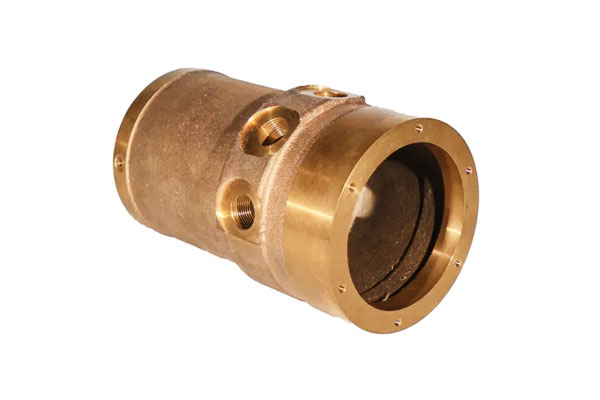
Brass Pros:
- Excellent Machinabilitéit
- Héich Verwëllegen
- Bezuelbar
- Gutt ästhetesch Varietéit
Brass Cons:
- Dezincification Risiko
- Niddereg Kraaft
- Ufälleg fir ze verschwannen
Bronze Pros:
- Héich Kraaft a Verschleißbeständegkeet
- Superior Korrosioun Resistenz
- Excellent fir Lager a Marine Deeler
- Schéin Patina mat der Zäit
Bronze Cons:
- Méi schwéier ze Maschinn
- Méi deier
- Niddereg thermesch an elektresch Konduktivitéit
13. Verglach Dësch: Brass vs Bronze
| Kategorie | Bram Emmach | Bronze |
| Basis Zesummesetzung | Kupfer + Zinc | Kupfer + Tinn (oder aner Elementer) |
| Gemeinsam Legierung Elementer | Zinc, Loaz Steed (fräi-machining), Nickel (Néckel Sëlwer) | Tinn, Aluminium, Silicon, Phosphorrus, Manganese, Beryllium |
| Faarf | Hell Gold bis Giel (méi héich Zn) | rout-brong, heiansdo gëllen; patinas iwwer Zäit |
| Dicht (g / cm³) | ~8.4-8.7 | ~8.7-8.9 |
| Tensil Stäerkt (MPa MPa) | 300-550 | 350-800 (Aluminium Bronze bis 900 MPa MPa) |
| Rendung Kraaft (MPa MPa) | 100-350 | 200-600 |
| Erlong (%) | 20-50 | 10-35 |
| Hannscht (Binell hb) | 50-150 (variéiert jee no Legierung) | 60-210 (Aluminium Bronze kann iwwerschreiden 200 HB) |
| Thermesch Verwaltungsgeschäfter (W / m · k) | ~100-130 | ~50-70 (Blech Bronze); sou niddereg wéi 35 fir e puer Al Bronze |
| Elektresch Kämpfung (%IACS) | 28-40% | 7-15% (vill méi niddereg wéinst Zinn oder Aluminium) |
| Korrosioun Resistenz | Gutt; ufälleg fir Entzinkéierung an Ammoniak/Salz | Explaz vun engem exzellenten, besonnesch a Marine Ëmfeld; immun géint Entzinkéierung |
| Fräisabilitéit (Machinabilitéit) | Explaz vun engem exzellenten, virun allem mat Leed Brass | Mëttelméisseg bis gutt; variéiert vill vun der Legierungsart |
| Geigaktioun | Ganz gutt | Explaz vun engem exzellenten, besonnesch fir artistesch Castings |
| Kale Aarbechtbarkeet | Explaz vun engem exzellenten; gezeechent kënne ginn, gestempelt, gesponnen | Mëttelméisseg; méi limitéiert fir méi haart Bronze |
| Käschte | Allgemeng manner | Allgemeng méi héich, besonnesch Al a Spezialitéit Bronze |
Sound Qualitéit (Musikalesch Notzung) |
Hell, schaarf Téin (Trompetten, Hunnen) | Warm, resonant Téin (Klacken, cymbals, gongs) |
| Patina Formatioun | Mat der Zäit zerstéiert bis donkelbrong oder gréng | Formt ästhetesch agreabel gréng / blo Patina iwwer laang Perioden |
| Magnéitesch Permeabilitéit | Net-Magnéitesch | Net-Magnéitesch (puer Al Bronze kann schwaach magnetesch ginn) |
| Solderen / Solderen | Liicht soldered; Zénk kann während dem Schweißen volatilize | Typesch gekachten; spezialiséiert Fülllegierungen néideg fir High-Performance |
| Marine Geeignet | Limitéiert - nëmmen spezifesch Legierungen (Z.B., Marine Messing) | Exzellent - ideal fir Mierwaasser ausgesat Deeler |
| Schlëssel industriell Uwendungen | Placuéierend Fittings, musikalesch Instrumenter, elektresch Stecker | Beafingen, bushings, Marine Propeller, Skulptur, héich-Laascht Uwendungen |
| Verwäertung | Héich recycléierbar | Héich recycléierbar |
14. Conclusioun
Brass a Bronze, wärend chemesch ähnlech a Kupferbaséiert Legierungen sinn, bidden déif verschidden Eegeschaften an Uwendungen.
Brass excels an Konduktivitéit, Filaktioun, a kascht, mécht et ideal fir elektresch an Sanitär benotzt. Bronze steet eraus an Staang, Korrosioun Resistenz, a Longevity
Wiel tëscht Messing a Bronze verlaangt eng detailléiert Versteesdemech vun Leeschtung Ufuerderunge, Ëmweltbedéngungen, a Käschten Aschränkungen.
Andeems d'Materialeigenschaften mat Applikatiounsfuerderunge ausgeriicht sinn, Ingenieuren an Designer kënnen d'Längegkeet garantéieren, Zouverlässegkeet, an ästheteschen Wäert an hire Produkter.
Faqs
Wat besser ass: Bronze oder Messing?
Et hänkt vun der Applikatioun of.
- Bram Emmach ass besser fir Uwendungen erfuerderlech gutt Machinabilitéit, elektresch Kämpfung, an a hell, dekorativen Erscheinung, sou wéi Sanitär, musikalesch Instrumenter, an elektresch Stecker.
- Bronze ass besser gëeegent fir héich-Kraaft, wear-resistent, an an Korrosion-resistent Uwendungen, besonnesch an Marine, lager, an an schwéier Maschinnen Ëmfeld.
Kuerz gesot:
- Wielt Bram Emmach fir Ästhetik an einfacher Form.
- Wielt Bronze fir Kraaft, Haltbarkeet, an haart Ëmfeld.
Ass Messing oder Bronze méi deier?
Bronze ass allgemeng méi deier wéi Messing.
- Dëst ass wéinst sengem héijen Inhalt vun tinn, Aluminium, oder aner Spezialitéit Elementer wéi hun beryllium, déi méi deier si wéi Zink (am Messing benotzt).
- Ganz nachelesch, Bronzelegierungen tendéieren méi komplex Veraarbechtung ze hunn a ginn dacks benotzt kritesch oder héich performant Uwendungen, weider Erhéijung Käschten.
Wéi kënnt Dir soen ob et Bronze oder Messing ass?
Hei sinn Schlëssel Weeër ze z'ënnerscheeden tëscht Messing a Bronze:
- Faarf:
-
- Bram Emmach: Giel bis Gold, ofhängeg vum Zinkgehalt.
- Bronze: rout-brong, dacks méi däischter oder mat enger Patina.
- Toun (Tonal Qualitéit):
-
- Schlag den Objet sanft: Bram Emmach kléngt dacks méi héich an "ringy", heiansdo Bronze gëtt eng méi déif, méi Resonanz Tonalitéit.
- Magnetismus:
-
- Béid sinn net magnetesch, awer Bronzelegierungen kënnen Spuere vun Eisen oder aner Elementer enthalen, déi e liicht magnetesche Verhalen weisen.
- Spark Test (wann sécher ze Leeschtunge):
-
- Bronze produzéiert méi kuerz, rouder Sparkelen, heiansdo Messing Funken si méi hell a méi giel-wäiss.
Firwat gëtt Bronze net méi wäit benotzt?
Bronze gëtt nach ëmmer benotzt, Mee:
- Et ass ginn manner heefeg am Konsument Produiten opgrond méi héich Material Käschten an den Opstig vu méi ekonomeschen Alternativen wéi Messing, Plastik, an Edelstol.
- Bram Emmach, méi einfach ze maschinen a méi bëlleg ze produzéieren, huet ersat Bronze a villen net kriteschen Uwendungen wou ultra-héich Kraaft oder Korrosiounsbeständegkeet net néideg ass.
- An modern Ingenieur, Bronze ass reservéiert fir spezifesch Rollen (Z.B., Marine Propeller, bushings) wou seng eenzegaarteg Eegeschafte wesentlech sinn.



